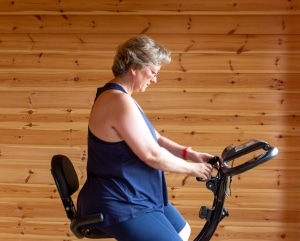 How to Escape Founder Dependency and Scale Your Business Without Burnout
How to Escape Founder Dependency and Scale Your Business Without Burnout
You built it. You pushed through. You made it work.
But now? The thing you created is taking everything you’ve got.
It’s not that you’re not capable. You are. You’ve scaled to seven or eight figures, you’ve hired a team, you’ve built a solid reputation. On paper, it looks like success.
But in reality? You’re still the centre of it all. Indeed, every decision, every problem, every fire lands on your desk.
And no one talks about how lonely that can feel.
However, I have 30 years of experience in corporate transformation and leadership development. I’ve worked in high-stakes environments, I’ve led large-scale change, I’ve burned out, I’ve rebuilt.
Now, I’m turning that experience to founders like you, because I know exactly what it takes to build something that doesn’t break you.
Founder Dependency is the Hidden Cost of Growth
In the early stages, your fingerprints were on everything. That made sense. But now, being across it all isn’t a strength. It’s a stranglehold.
Here’s what founder dependency often looks like:
-
You say you want to work on strategy, but you’re drowning in delivery
-
Your team needs constant input to move things forward
-
Holidays are a stress test, not a break
-
You’re surrounded by people, but still feel alone
-
If you stop, everything slows down
You’re not failing. The system is. Because it was built to grow around you, not beyond you.
What Founders Want but Rarely Admit
Most founders don’t talk about what they really want. So let’s say it:
-
You want to step back without the whole thing falling apart
-
You want your team to take ownership, not just tasks
-
You want space to think, not just to react
-
You want to feel proud again, not just exhausted
-
You want to grow without losing more of yourself
In any case, this isn’t about ego. It’s about impact.
Structure is What Sets You Free
Most support for founders falls into one of two camps: generic coaching or hard-nosed consultancy. Neither works if your problem is people-dependent process failure.
That’s where I come in.
The Founder Freedom Programme is built for service-business leaders who are stuck in the middle — successful, but stretched too thin. Also, it brings three core elements together:
1. Strategic Consultancy for Founders
We map where your energy is leaking and build a clearer role for you as the strategic lead.
2. Leadership Development for Your Team
We help your managers stop escalating everything upwards and start thinking like leaders, not followers.
3. Scalable Infrastructure Design
We create rhythms, systems, and decision points that stop everything from bottlenecking around you.
This is not about stepping away from your business. It’s about stepping into a new kind of leadership — one that serves your future, not just your calendar.
 How It Changes Everything
How It Changes Everything
When you shift from founder-dependent to leadership-enabled, here’s what happens:
-
You finally get your evenings back
-
Problems get solved without your fingerprints on them
-
Growth becomes strategic, not stressful
-
You feel excited about the business again
-
You become a true CEO, not the genius of everything
Above all, you get your life back.
Why I Care
I’ve seen what burnout does to brilliant people, I’ve lived it. I’ve also seen what happens when structure, space and smart leadership come together. That’s when businesses flourish and people stay well.
So if you’re running a business that’s running you into the ground, let’s change that.
This is your invitation to do things differently.
Finally, let’s stop pretending more hustle is the answer. Let’s build something that lasts, and doesn’t cost you everything else along the way.
Ready to get out of the weeds and back into your rightful seat as the strategic lead?
Let’s talk.
Whether you’re looking to pivot your business model or upskill your workforce, we provide the expertise and support to turn your vision into reality. Let’s collaborate to unlock your potential and create a future-ready version of your business or career.
Enjoyed this blog? Check out my other blogs on various resilience and leadership topics here.

 (But That’s Exactly What They’re Missing)
(But That’s Exactly What They’re Missing)
 So What Can You Actually Do?
So What Can You Actually Do? Let’s be brutally honest: no ambitious leader wakes up thinking, “I need to be more resilient.” You’re too busy dealing with an endless stream of meetings, high-stakes decisions, and the unrelenting pressure to perform. Resilience? That’s just another buzzword HR loves to throw around.
Let’s be brutally honest: no ambitious leader wakes up thinking, “I need to be more resilient.” You’re too busy dealing with an endless stream of meetings, high-stakes decisions, and the unrelenting pressure to perform. Resilience? That’s just another buzzword HR loves to throw around. Ready to Build the Kind of Resilience That Puts You Ahead of the Pack?
Ready to Build the Kind of Resilience That Puts You Ahead of the Pack? A Critical Challenge for UK Business Leaders
A Critical Challenge for UK Business Leaders
 Leverage Technology to Connect
Leverage Technology to Connect Your Next Steps: Leading the Connection Revolution
Your Next Steps: Leading the Connection Revolution Insights from Global Trends
Insights from Global Trends
 Your Next Steps: Leading the Charge Against Workplace Stress
Your Next Steps: Leading the Charge Against Workplace Stress


 Wellbeing: Whose responsibility is it?
Wellbeing: Whose responsibility is it?
 When I took up the piano, little did I know the wonderful side effects! It is a great way to improve brain resilience! To keep our brains resilient we need to take care of our brain’s cognitive and emotional health. Keep your brain healthy by stimulating it with activities that challenge it.
When I took up the piano, little did I know the wonderful side effects! It is a great way to improve brain resilience! To keep our brains resilient we need to take care of our brain’s cognitive and emotional health. Keep your brain healthy by stimulating it with activities that challenge it. Whether it’s a new language, history, or science topic, keeping your brain active can help you retain information.
Whether it’s a new language, history, or science topic, keeping your brain active can help you retain information. It is a long-established fact that exercise is good for our bodies but what about brain resilience? The evidence is very clear – leading a physically active lifestyle provides benefits for overall health and wellbeing. Studies have repeatedly shown that people who are physically active throughout their lives have a lower-than-average risk of a decline in thinking skills with aging.
It is a long-established fact that exercise is good for our bodies but what about brain resilience? The evidence is very clear – leading a physically active lifestyle provides benefits for overall health and wellbeing. Studies have repeatedly shown that people who are physically active throughout their lives have a lower-than-average risk of a decline in thinking skills with aging. Classes aren’t just a way to pass the time – they can actually help keep your brain active and sharp. If you’re interested in a new hobby or want to improve your job performance, taking classes is a great way to learn new things and keep your mind fresh. With so many options available, you’re sure to find a class that’s perfect for you.
Classes aren’t just a way to pass the time – they can actually help keep your brain active and sharp. If you’re interested in a new hobby or want to improve your job performance, taking classes is a great way to learn new things and keep your mind fresh. With so many options available, you’re sure to find a class that’s perfect for you. What is a curveball?
What is a curveball? If you are looking for stress management techniques to stop stressful events from happening, then sorry, you are in the wrong place! The utility bills will still go up in October and the cost of living will continue to rise. So how do some people manage to take stress in their stride and others cannot? Essentially it is a matter of perception. What I consider to be stressful, you might be absolutely fine with it. And vice versa of course. A lot of the feelings of stress come from feeling out of control like life is happening to us. Feelings of insecurity, lack of options, and feeling overwhelmed are very common.
If you are looking for stress management techniques to stop stressful events from happening, then sorry, you are in the wrong place! The utility bills will still go up in October and the cost of living will continue to rise. So how do some people manage to take stress in their stride and others cannot? Essentially it is a matter of perception. What I consider to be stressful, you might be absolutely fine with it. And vice versa of course. A lot of the feelings of stress come from feeling out of control like life is happening to us. Feelings of insecurity, lack of options, and feeling overwhelmed are very common. and your ability to achieve your goals. It also means maintaining a positive attitude toward the challenges and obstacles you may face along the way.
and your ability to achieve your goals. It also means maintaining a positive attitude toward the challenges and obstacles you may face along the way.


 What is High-Intensity Interval Training – HIIT
What is High-Intensity Interval Training – HIIT